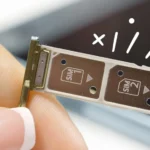The world of telecommunications has witnessed significant advancements over the past few decades, from the first-generation analog networks to the latest 5G-enabled mobile connectivity. One of the most exciting innovations in this field is the embedded SIM (eSIM). Unlike traditional SIM cards, which require physical insertion and swapping, eSIM technology is digital, offering greater flexibility and efficiency. But is eSIM truly the future of mobile connectivity? This article explores everything you need to know about eSIM, including its benefits, challenges, and the impact it has on consumers and industries.
What is an eSIM?
An eSIM (embedded SIM) is a digital SIM that allows users to activate a cellular plan without the need for a physical SIM card. It is built directly into a device, such as a smartphone, tablet, smartwatch, or even a laptop. The eSIM technology operates using a rewritable chip, which can be programmed with different carrier profiles remotely.
How Does eSIM Work?
Unlike traditional SIM cards that store carrier information on a removable chip, eSIMs store the same data within a device’s embedded chip. This means users can switch carriers or plans without having to swap out a physical SIM card. The activation process is typically done through a QR code or an app provided by the network provider.
Advantages of eSIM Technology
1. Convenience and Flexibility
One of the biggest advantages of eSIM is the convenience it offers. Travelers, for example, can switch between local networks seamlessly without purchasing and inserting a new SIM card. Business users can also manage multiple lines on a single device without juggling physical SIM cards.
2. Space Efficiency in Devices
As technology progresses, manufacturers aim to make devices slimmer and more compact. By eliminating the need for a physical SIM tray, eSIMs free up valuable space, allowing for larger batteries or additional features.
3. Enhanced Security
Losing a traditional SIM card can be a security risk, as it can be stolen and used fraudulently. Since eSIMs are embedded within the device, they are less susceptible to theft or cloning, making them a more secure option.
4. Better Connectivity for IoT Devices
The Internet of Things (IoT) is expanding rapidly, with more connected devices requiring efficient mobile connectivity. eSIM technology makes it easier to manage and connect multiple IoT devices, such as smart home systems, connected cars, and industrial machinery.
Disadvantages of eSIM Technology
1. Limited Carrier Support
Despite its growing adoption, not all carriers support eSIM technology. Some regions still rely heavily on physical SIM cards, limiting the accessibility of eSIM features.
2. Complex Activation Process
While eSIM activation is generally straightforward, it can be more complicated than simply inserting a physical SIM card. Users may need to go through additional steps, such as scanning QR codes or manually inputting network details.
3. Device Compatibility Issues
Not all mobile devices currently support eSIM technology. Consumers must ensure that their device is compatible before considering switching to an eSIM-only plan.
4. Switching Devices May Be More Difficult
With a physical SIM card, transferring a number to a new device is as simple as swapping the SIM. With eSIM, however, transferring to a new device may require additional steps and carrier intervention.
eSIM vs. Traditional SIM: A Comparison
| Feature | eSIM | Traditional SIM |
|---|---|---|
| Physical Card | No | Yes |
| Switch Carriers | Remote activation | Requires SIM swap |
| Device Compatibility | Limited to newer devices | Compatible with all devices |
| Security | More secure | Can be stolen or cloned |
| Space Usage | No physical space required | Requires SIM slot |
eSIM Adoption in Different Industries
1. Smartphones and Consumer Devices
Major smartphone manufacturers like Apple, Samsung, and Google have integrated eSIM technology into their latest models. Apple’s iPhone lineup, for example, supports dual-SIM functionality using an eSIM alongside a physical SIM.
2. Automotive Industry
Connected cars are becoming more common, with eSIMs enabling real-time navigation, emergency services, and entertainment features. Car manufacturers such as Tesla and BMW are utilizing eSIM technology to provide seamless connectivity.
3. Travel and Roaming Services
Frequent travelers benefit greatly from eSIM technology as it allows them to switch to local carriers without purchasing a new SIM card. Many international carriers now offer eSIM-based travel plans, reducing roaming costs.
4. Enterprise and IoT Applications
Businesses using IoT devices, such as smart meters, industrial sensors, and logistics tracking systems, leverage eSIMs to ensure continuous connectivity. This simplifies device management and reduces operational costs.
The Future of eSIM Technology
The adoption of eSIM technology is expected to grow significantly in the coming years. Here are some key trends that will shape its future:
1. Expansion of Carrier Support
As more telecom providers adopt eSIM technology, global coverage will improve, making it a viable option for more users.
2. Advancements in Security Measures
With increasing cybersecurity concerns, eSIM technology will continue to evolve with enhanced encryption and authentication protocols.
3. Rise of eSIM-Only Devices
Some manufacturers are already moving toward eSIM-only devices, eliminating physical SIM slots altogether. This trend is likely to continue, leading to more compact and efficient devices.
4. Increased Adoption in Emerging Markets
Currently, eSIM technology is more prevalent in developed countries. However, as smartphone penetration increases in emerging markets, eSIM adoption is expected to rise.
Conclusion: Is eSIM the Future of Mobile Connectivity?
While eSIM technology offers numerous advantages, its widespread adoption still faces hurdles such as limited carrier support and device compatibility issues. However, as the telecommunications industry continues to evolve, eSIM is likely to become the standard for mobile connectivity, offering users greater flexibility, security, and convenience.
Whether you’re a frequent traveler, a tech enthusiast, or an enterprise looking for seamless connectivity solutions, eSIM technology is a game-changer. With its continuous advancements, it’s only a matter of time before eSIM replaces traditional SIM cards entirely.






